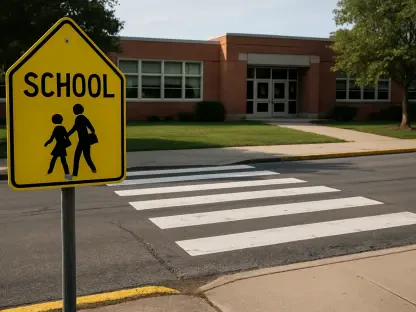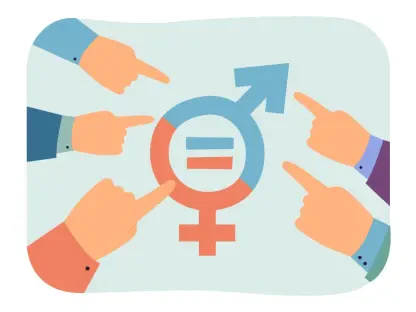In an era driven by rapid technological advancement and pressing global issues, young innovators are stepping up with remarkable ingenuity to address real-world challenges. The Samsung Solve for Tomorrow competition provides a platform for these bright minds to develop and present groundbreaking projects. This event, which draws participation from student teams across the United States, emphasizes creative problem-solving and the application of STEM (Science, Technology, Engineering, and Math) education in tangible ways. Among the numerous participants, four schools have emerged as notable finalists for their unique solutions to societal problems, each demonstrating an exceptional understanding of intricate issues and the innovative applications of modern technology. These projects, designed by students from Aurora Highlands P-8, Bloomington High School South, Doral Academy of Northern Nevada, and Lathrop High School, offer a glimpse into the future of invention—one where empathy, accessibility, and safety are paramount.
Inclusive Gaming Revolution
Students from Aurora Highlands P-8 have taken significant strides toward making gaming an inclusive experience, especially for individuals with disabilities. By focusing on accessibility, they designed an adaptive video game controller that addresses the specific challenges faced by gamers with physical limitations. The invention highlights a growing recognition of the need to make leisure activities accessible for all, showcasing a deep-rooted empathetic approach. This innovative controller not only allows individuals with disabilities to engage fully in gaming but also strives to level the playing field, ensuring that everyone can enjoy the richness of the gaming world without barriers. This project reflects an important cultural shift toward inclusivity and the reshaping of recreational pursuits to accommodate diverse needs. It exemplifies how technology can be harnessed thoughtfully to bridge gaps, fostering a community where entertainment is a universal right rather than a privilege. In today’s digital age, ensuring all individuals can partake in gaming experiences promotes a greater understanding and recognition of the value of inclusivity.
Moreover, the student-led initiative at Aurora Highlands P-8 underscores a burgeoning awareness of the societal responsibilities carried by technological advancements. By prioritizing accessibility, the project reflects how forward-thinking design can drive positive change. The adaptive controller not only aims to reshape personal entertainment but also sets a precedent for future innovations that aspire to be more inclusive. This movement towards accessible gaming is a powerful reminder that technology should be a facilitator for inclusion, capable of providing opportunities for engagement and connection across diverse communities. By integrating such values into their technological pursuits, these students have illustrated the potential for gaming to unite rather than divide, urging the broader tech industry to follow suit in crafting inclusive experiences. As the demand for compassionate and thoughtful designs increases, this project serves as a beacon for emerging innovators who aim to make the world a more accepting and inclusive space.
Enhancing Athletic Safety
At Bloomington High School South, students are changing the landscape of athletic safety for deaf or hard-of-hearing athletes with their innovative creation, the Storm Shield. This wearable prototype hearing aid is engineered to enhance athletes’ situational awareness, significantly increasing safety during sports engagements. The device reflects a profound understanding of the necessity for tailored safety solutions, responding to a critical niche need. By collaborating closely with subject matter experts, the student team ensured the Storm Shield meets the precise requirements of this athlete demographic, underscoring the essential role of partnerships in technological innovation. Their approach highlights the necessity of comprehensive engagement with the intended users, ensuring the invention performs optimally within its specific context. The importance of this collaborative methodology resonates not only within the sports community but also in how future technologies might be developed, with user engagement and real-world application at the forefront of design.
Furthermore, the initiative from Bloomington High School South emphasizes the importance of inclusivity in sports—a field often reliant on physical and sensory abilities. The Storm Shield stands as a crucial development, proving that protective and assistive technologies can be seamlessly integrated into athletic gear. The project paves the way for broader conversations about safety and inclusiveness, advocating for technologies that prioritize the well-being of all participants. This endeavor not only contributes to athlete safety but also challenges existing sports paradigms, prompting reconsideration of what safety means for those with different capabilities. Developing such targeted solutions showcases how young inventors can address overlooked areas of concern, making sports a safer and more inclusive domain. Their work inspires confidence in the next generation of innovators, revealing the profound impact that empathetic design and dedicated research can have across multiple facets of society.
Affordable Prosthetic Innovations
The students from Doral Academy of Northern Nevada are transforming the medical device landscape with their breakthrough project, the “3-D-sthetic,” an affordable, customizable prosthetic arm. This initiative harnesses the transformative potential of 3D printing technology, drastically reducing both the cost and time involved in prosthetic production. By doing so, the team makes life-enhancing devices more accessible to a broader audience, championing both social equity and environmental sustainability. Through innovation, the team exemplifies how progressive technologies can democratize access to essential medical aids, providing solutions that are economically feasible without compromising on functionality. This project not only exemplifies the students’ commitment to addressing significant healthcare barriers but also opens a dialogue about accessible innovations that improve lives while reducing environmental impact through efficient resource use.
In addition to showcasing technical prowess, the prosthetic arm project iterates a crucial social message—that everyone should have access to necessary healthcare devices regardless of financial circumstances. The “3-D-sthetic” represents an incredible fusion of technology and empathy, illustrating how young inventors are capable of solving complex problems with creativity and compassion. Their achievement echoes a larger movement toward inclusive technologies that serve the public good, reinforcing the notion that technological advancements should benefit society at large. Such forward-thinking initiatives raise important discussions about the future of healthcare technology, posing questions about how emerging tools can be used not only for advancement but for the equitable distribution of resources. As the world moves further into the digital age, such student-led innovations hint at a promising future where healthcare disparities are addressed through thoughtful design and community-centric solutions.
Navigating Icy Roads Safely
The inventive minds at Lathrop High School have tackled one of Alaska’s pressing issues—icy road conditions—with their AI-driven, GPS-bolstered laser system called “Laser Lane Lines.” This ambitious project aims to enhance road safety by providing clear navigation guides on slippery roads, which are often perilous and prone to accidents. By integrating state-of-the-art technology, including artificial intelligence and GPS, the system delivers accurate, real-time data to assist drivers. Such a proactive approach not only addresses immediate safety concerns but also sets precedence for future innovations in road safety management. The Laser Lane Lines system leverages modern technological advancements to mitigate the adverse effects of harsh weather conditions, ensuring safer transit for everyone. This project underscores the essential role of technology as a preventative measure and highlights its potential to save lives and resources, establishing a vital benchmark in vehicular safety solutions.
Moreover, Lathrop High School’s project goes beyond mere technical innovation—it actively advances public safety discourse by illustrating the capabilities of technology when applied with foresight. The project emphasizes a crucial aspect of engineering: identifying specific problems and crafting precise solutions that improve well-being on a broad scale. By undertaking such community-focused projects, the students demonstrate how young inventors can proactively engage with ongoing societal issues. This commitment to creating safer environments stands as an inspiration to future innovators, encouraging a shared vision of safety where technology acts as a reliable partner. The “Laser Lane Lines” initiative speaks to the vast potential of merging AI with practical applications, laying groundwork for continual improvements in infrastructure support. These endeavors spark crucial discussions about the long-term integration of AI in everyday safety protocols, setting the stage for enduring enhancements in public security.
Championing Collaboration
In today’s fast-paced era marked by technological advancements and pressing global challenges, young minds are stepping forward with impressive creativity to tackle real-world issues. The Samsung Solve for Tomorrow competition offers a platform for these bright individuals to cultivate and present pioneering projects. This event, open to student teams nationwide in the United States, highlights inventive problem-solving and the practical application of STEM (Science, Technology, Engineering, and Math) education. Among countless participants, four schools have stood out as finalists with their distinctive resolutions to societal problems, showcasing a profound grasp of complex challenges and innovative uses of modern technology. Projects from Aurora Highlands P-8, Bloomington High School South, Doral Academy of Northern Nevada, and Lathrop High School provide a peek into the inventive future. These initiatives prioritize empathy, accessibility, and safety, epitomizing the ideal next generation of inventors shaping the world.









